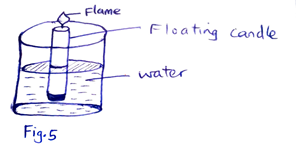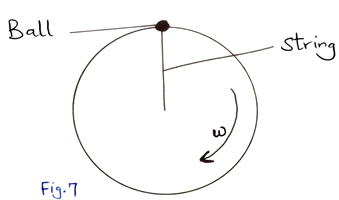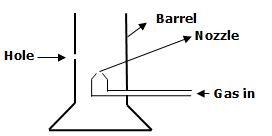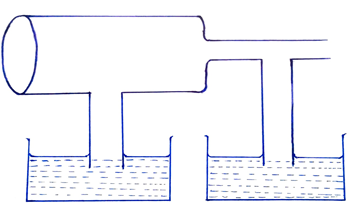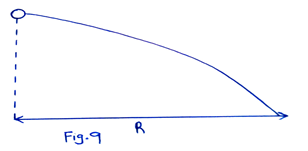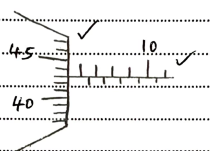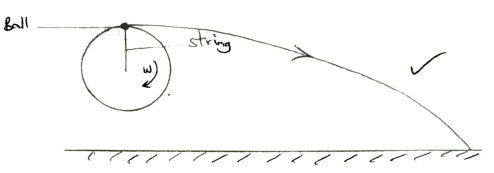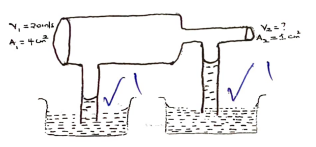Instructions to candidates
- This paper consists of two sections A and B.
- Answer all the questions in the two sections in the spaces provided after each question
- All working must be clearly shown.
- Electronic calculators, mathematical tables may be used.
- All numerical answers should be expressed in the decimal notations.
Take g=10ms-2 and Specific Heat capacity of water=4,200JKg-1K-1
SECTION A: 25 MARKS Answer All the Questions in this Section.
- On the space provided below sketch a micrometer screw gauge clearly showing the reading 14.43mm. (Take the pitch of the screw gauge as 0.5mm) (2mks)
- Distinguish between Cohesive and Adhesive forces. (2mks)
- The fig.1 below shows a liquid-in-glass thermometer.
Fig. 1- Name the:
- Thermometer……………………………………………………………………………… (1mk)
- Part labeled Y……………………………………………………..………………….. (1mk)
- State the change that can be made to the capillary bore in order to make the thermometer more sensitive. (1mk)
- Name the:
- A form four student lifts on his palm a mass of 1Kg as shown in as shown in fig.2
Determine force F required to keep holding the mass horizontally as shown. (3mks) - Give a reason why pollen grains placed on the surface of clean water are seen moving continuously and randomly. (1mk)
- In the Fig.3 below, the cardboard is pulled suddenly. State the reason why the coin falls into the beaker. (1mk)
- Fig.4 below shows a single movable pulley used to raise a load of 50N.
Fig.4
- State the velocity ratio of this arrangement. (1mk)
- Assuming that friction experienced is negligible and the weight of the pulley wheel is 7.5N, determine the minimum force required to raise the load at a constant speed. (1mk)
- State the pressure law of gases. (1mk)
- A block of copper mass 0.5Kg and specific Heat capacity 400JKg-1K-1 initially at 80°C is immersed in water at 20◦C. If the final temperature is 21◦C, determine the mass of the water. (3mks)
- State the reason why heat transfer by radiation is faster than conduction. (1mk)
- A dripless candle is weighted slightly on the bottom so that it floats upright in a container filled with water as shown in Fig. 5 below.
State and explain what happens as the candle burns. (2mks) - Determine the least pressure that can be exerted by a 20kg solid of dimensions 10cmx20cmx40cm on a horizontal surface. (3mks)
- State the SI unit of the quantity amount of substance. (1mk)
SECTION B: 55 Marks
-
- State the Archimedes’ principle. (1mk)
- Fig.6 below shows a simple hydrometer.
Fig.6
- Identify the parts labelled A and B.
- State the purpose of part labelled B. (1mk)
- How the hydrometer would be made more sensitive. (1mk)
- A weather balloon of volume 1.2m3 is tied to a rigid support while being filled with helium gas. The mass of the fabric making the balloon is 0.30kg. Determine the maximum tension on the string tying the balloon to the rigid support.
(Density of air is 1.25kgm-3 and density of helium is 0.18kgm-3 ). (4mks) - Explain how a submarine can be made to float and sink in water. (2mks)
-
- State Hooke’s law. (1mk)
- A student carried out an experiment to investigate the relationship between the force and extension produced on a spiral spring. The student tabulated his results as shown below.
Force (N) 0 0.8 1.5 3.0 4.5 6.0 7.5 Extension (cm) 0 0.5 1.0 2.0 3.0 4.0 5.0 - Plot a graph of extension in (cm) y-axis against Force (N) (5mks)
- Determine the spring constant. (4mks)
- What force would be required to produce an extension of 2.5cm? (1mk)
- What extension is produced by:
- A force of 5.5N………………………………………… (1mk)
- A mass of 700g………………………………………… (1mk)
-
- Define a radian as applied in circular motion. (1mk)
- A car negotiating a corner at a constant speed is said to have a change of momentum.Explain this observation. (1mk)
- The Fig.7 below shows a ball being whirled in a vertical plane. Sketch on the same figure the path followed by the ball if the string cuts when the ball is at the position shown in the figure. (1mk)
- State the purpose of banking roads at bends. (1mk)
- A boy whirls a stone of mass 0.2kg tied to a string of length 0.4m in a vertical plane at a constant speed of 2rev/s. (Take g=10ms-2 )
- State two forces acting on the stone when it is at the highest point. (2mks)
- Determine the :
- angular velocity of the stone; (3mks)
- tension in the spring when the stone is at the highest point; (3mks)
-
- State Bernoulli’s principle. (1mk)
- Fig.8 below shows a tube of varying cross-sectional area. V1 V2 V3 and V4 represents the velocities of water as it flows steadily through the sections of the tube.
Fig. 8
Arrange the velocities V 1 , V 2, V3 and V 4 in descending order. (1mk) - The diagram below shows a Bunsen burner
Explain how air is drawn into the barrel (2mks) - The Fig.8 below shows air being blown through a tube of a varying cross- sectional area.
Using the information in the diagram- Calculate the outlet velocity v 2. (2mks)
- Show the relative water levels in the two capillary tubes. (2mks)
-
- Fig.9 below shows the path of a light ball projected horizontally.
The ball is then made to spin in an antic lockwise direction as it moves; On the same axis, sketch the new path of the ball. (2mk) - Using the definition of impulsive force, show that F=ma. (3mks)
- Two stationary trolleys A and B are separated by a compressed spring and held together by a thread. The mass of trolley A is 2.0kg and that of B is 1.0kg. When the thread is cut the trolleys move rapidly apart.
- What is the cause of movement of trolleys when the thread is cut? (1mk)
- What is the total momentum of the trolleys just before the thread is cut. (2mks)
- If trolley A moves off with a speed of 0.25m/s. Calculate the speed with which trolley B moves off. (3mks)
- Fig.9 below shows the path of a light ball projected horizontally.
MARKING SCHEME
-
- ½ mm divisions a must
- Accept ,marks on same side of sleeve scale
-
- Cohesive forces are forces of attractioon between particles of the same kind.
- Adhesive forces are forces of attraction between particles of different kinds.
-
-
- Thermometer - clinical
- Part labeled : constriction
- make it narrower/ reduce diameter / make mit more narrow.
Do not accept narrow only or small diameter
-
- Clockwise moments = Anticlockwise moments
or F1d1 = F2d2
16/100F = 40/100 × 10
F = 25N - They are bombarded by (invisible) water particles which are in continuous random motion or wtte
- (According to Newton's Law of motion)the stationary coin remains since no force changes its state of rest (and falls due to the pull of gravity on it)
-
- 2
- E = (50 + 7.5) = 57.5N
- The pressure of a fixed mass of a gas is directly proportional to its absolute temperature at constant volume. Do not accept converse
- Heat lost by hot copper = Heat gained by water
McθcCc = MwθwCw
0.5 × 59 × 400 = 4200 × 1Mw
Mw = 2.8095 kg (4dp) - Electromagnetic waves ( radiation) travels at speed of light 3.0 × 108 m/s while vibration of particles (conduction) is slower due to their inertia.
-
- Candles floats more or rises.
- As it. burns, its total weight reduces, thus needing mless upthrust force in order to float.
- Least pressure = Force
Max Area
Pmin = Mg 20 × 10
L × W 0.2 × ,0.4
= 2500N/m2 - Moles
-
- A body (partially or fully) immersed in a fluid experiences an upthrust force equal ,to the weight of displaced fluid.
-
-
- A - Bulb
- B - Lead shots
- Enable it to float upright
- making the stem narrower
-
- Upthrust = wt of displaced air = wt of fabric + wt of Helium + Tension
ρaVag = mg + ρhVhg + F
1.25 × 1.2 × 10 = 0.3 × 10 + 0.18 × 1.2 × 10 + F
F = 15 − (3 + 2.16) = 9.84N -
- To sink, water is let into air chambers as the air is compressed but not released. (increasing total weight)
- To float, the air in the chambers is released and water driven out. (reducing its total weight)
-
- For any elastic material, the extension is directly proportional to the stretching force provided the elastic limit is not exceeded.
-
-
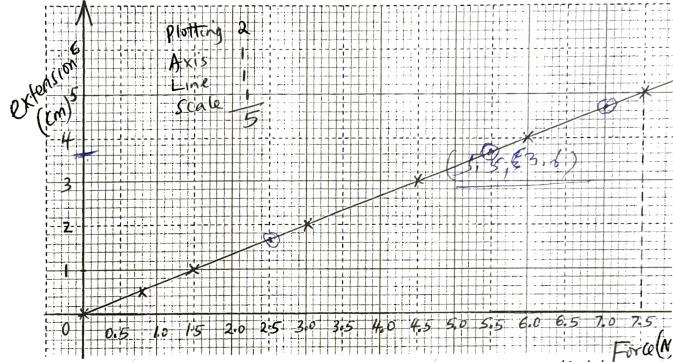
- Gradient ; Δ extension
Δ Force
= (5 − 0) cm/N Must show evidence on graph
(7.5 − 0)
= 0.6667cm/N 4sf
= 6.667 × 10−3 m/N
But spring constant K = 1/Gradient
K = (6.667 × 10−3)−1
= 150N/m - F = ,Ke = 150 × 2.5/100 = 3.75N Allow T.E
-
- e = F/K = 5.5/150 = 0.03667m or 3.667cm Allow T.E
- e = 7/150 = 0.04667m or 4.667cm
-
-
- A radian is the angle subtended at the centre of a circle by an arc length equal to the radius of the circle
- (Constant) change in direction causes (constant) change in velocity ( hence constant change in momentum)
-
- To allow users to negotiate the bend at a higher velocity without skidding (by reducing the dependency on friction for centripetal force)
-
-
- Centripetal force
- weight
- Accept pull of gravity rej. gravity
-
- w = 2πf = 2π × 2 = 12.568 rads−1
- T = mv2 − mg = mrw2 − mg
r
= 0.2 × 0.4 × 12.5682 − 0.2 × 10
= 10.636N
-
-
- Provided a fluid is non viscous, incompressible and its flow is streamline, an increase in its velocity causes a corresponding decrease in the pressure it exerts.
- V4 > V2 > V1 > V3
- At the nozzle, gas jets in at very high velocity reducing the pressure in the barrel. The higher/greater atmospheric pressure outside push air into the barrel through the hole.
-
- A1V1 = A2V2
4 × 10−4 × 20 = 1 × 10−4 V2
V2 = 80m/s
(1mk - either formula or correct substitution, earliest opportunity) -
- A1V1 = A2V2
-
-
- Impulsive force F = mv − mu (i.e change in momentum)
t time taken
F = m(v−u) but v − u = a
t t
F = ma -
- The elastic potential energy stored in the spring converted to K.E
- m1u1 + m2u2
(2×0) + (1×0)
= 0kgms−1 or Zero - Momentum before = momentum after
0 = M1V1 = M2V2
0 = 2 × 0.25 + 1 × V2
V2 = − 0.5m/s
Speed = 0.5m/s reject −0.5m/s
-
Download Physics Paper 1 Questions and Answers - Momaliche Pre Mock Exams 2023.
Tap Here to Download for 50/-
Get on WhatsApp for 50/-
Why download?
- ✔ To read offline at any time.
- ✔ To Print at your convenience
- ✔ Share Easily with Friends / Students



